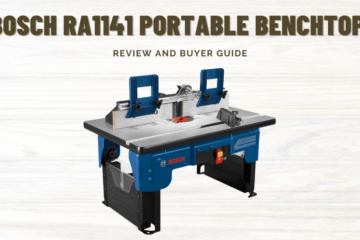Routers have changed the course of crafting new items through the efficiency and ease they offer to the users. They have therefore become one of the most significant devices for every artisan and garage owner.
Are you planning to get started on your new projects and looking for the best router for them? If yes, then there are some essentials that you need to consider before selecting any routing device. The foremost of these is the choice between a plunge and trim router.
Plunge Router vs Trim Router: (Difference)
The main difference between Plunge Router and Trim Router is, that Trim Router is a lightweight router that is designed for light-duty routing tasks while Plunge Router is a heavy-duty router that can be used for more aggressive routine tasks, such as mortising and rabbeting.
Plunge and trim refer to a fixed and trimmed equipped base in any router. Before comparing the uses of each of these bases and their compatibility with your projects, let us discuss how to define plunge and trim routers.
Plunge routers are equipped with spring loading on both arms of the unit. This facilitates the convenient and instant moving of the base manually and allows users to adjust the base according to their preferences.
Now you must be wondering what does plunge exactly mean?
The term translates to pressing the cutting bit deep inside the material and facilitating the cutting of increasingly thick materials, making the router suitable for edge cutting and other rugged applications.
Trim or fixed base routers have been around for a comparatively longer time than the plunge ones. They have a fixed base position and do not allow you to move the cutting bit at your convenience. Now you might question whether trim base routers have any benefit at all.
To answer this, let us discuss the accuracy of both the trim and plunge router. The fixed base router supports easy locking of the cutting bit, thereby adding to the unit’s accuracy. Trim routers are ideal when high precision is required and perfect for easy mounting on tables.
What’s the difference between a trim router and a plunge router?
As you already know, Both routers are designed to facilitate different types of trimming and routing skills. Plunge routers are relatively new and recommended to the very amateur worker looking to learn the craft without demanding anything exceptional from the machine.
The significantly more comprehensive range and versatility of Plunge routers make them better for general-purpose use like edge cutting and insets. These routers are finished in bulkier and large units, making them hard to mount on tables.
Moreover, the gigantic size of the plunge bases makes the router challenging to adjust and control precisely. Lastly, the base is always required to be removed before making any changes to the plunge router.
In contrast to this, fixed base routers are your choice if you cannot accommodate any compromises on your project’s precision. Also, Featuring super precise depth cuts, the routers are customizable and accurate while cutting.
Additionally, these routers are lightweight and easy to control and mount on desks without straining your muscles or arms. The overall compact size means a lower center of gravity and ultimately more excellent stability of the unit.
Should you buy a plunge or trim router?
After considering the details above and the features, we can assuredly conclude that both the trim and plunge bases have their specific uses. Thus, the best option is to purchase combo router units that support dual bases and excel in all aspects.
However, these combo units tend to be quite pricey for many users. For them, we suggest purchasing a fixed or trim base router after deciding on the features they need and their routing and trimming skills.
To conclude, if you are a beginner at routing and looking to achieve good quality and standard in your projects, then a plunge router is the best fit for you. Whereas, if you are a professional at the skill and demand nothing but the highest degree of accuracy in your projects, then a fixed base router should be your go-to!
Conclusion
We know how complex and confusing the decision of selecting between a trim and plunge router can be. Henceforth, to help make you this, we have written down an in-depth analysis between the bases and their features.
The final decision is upon you to select the right choice between a plunge, fixed base, or a combination of both in your router for your workstations and garage.

![Plunge Router vs Trim Router [Explained for Beginners]](https://theroutertable.com/wp-content/uploads/2023/09/Plunge-Router-vs-Trim-Router-–-Explained-for-Beginners.png)


![Best Woodworking Vise In Market [Review and Buyers Guide]](https://theroutertable.com/wp-content/uploads/2023/09/Best-Woodworking-Vise-In-Market-Review-and-Buyers-Guide-360x240.png)